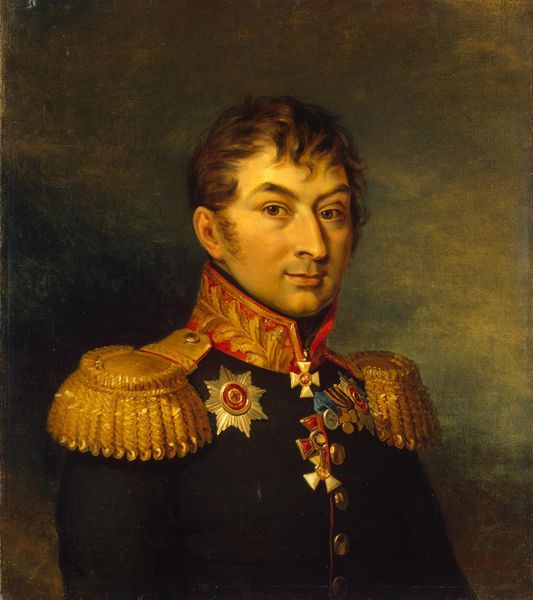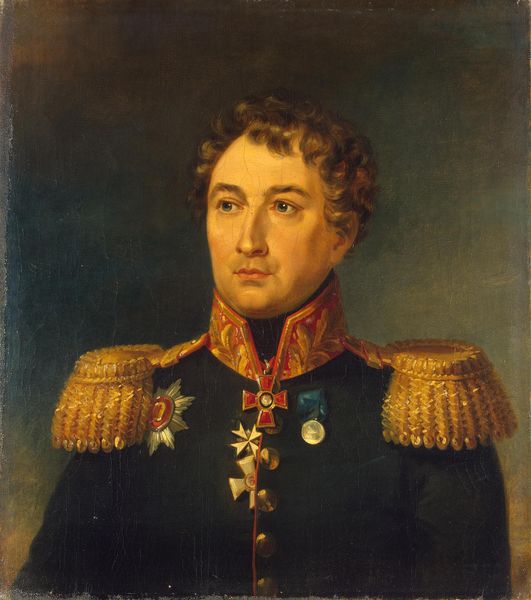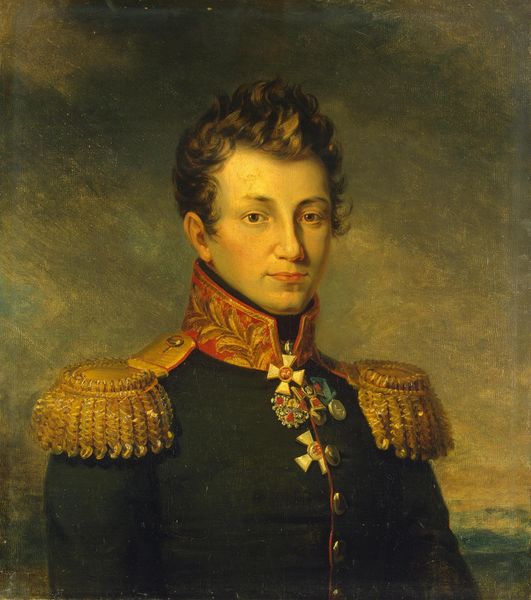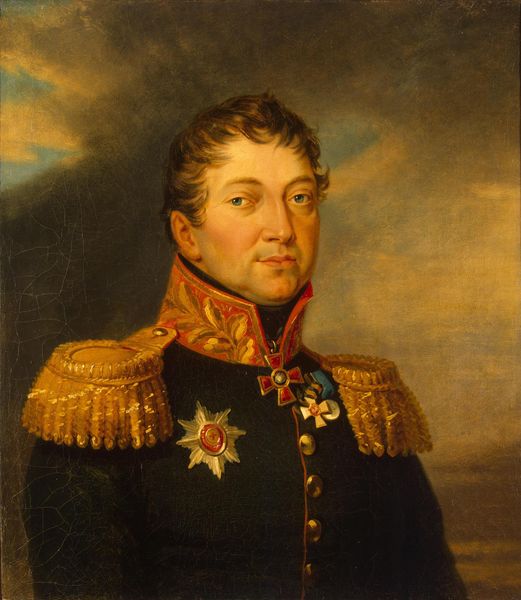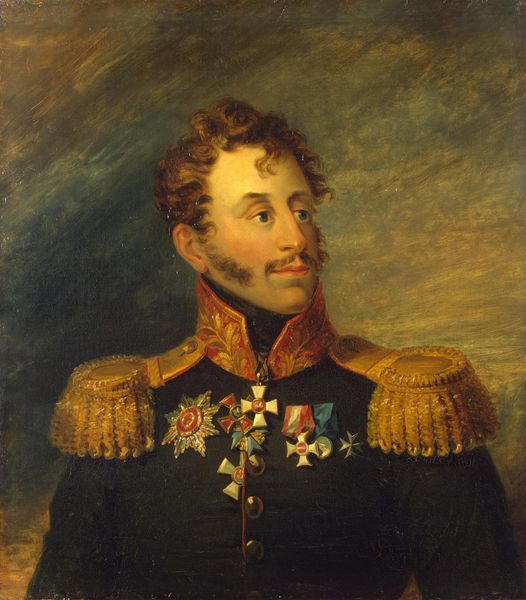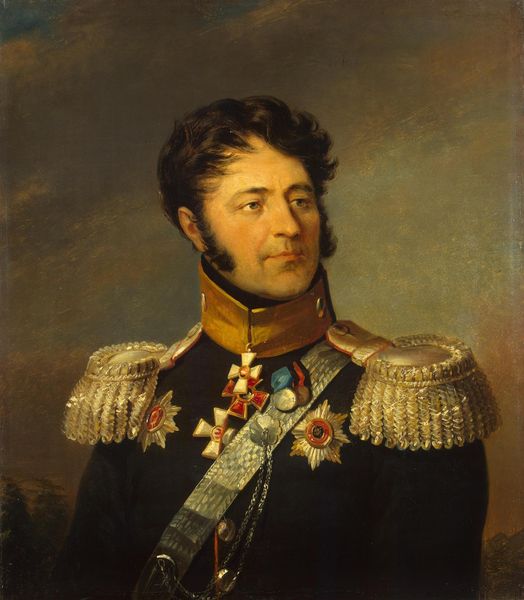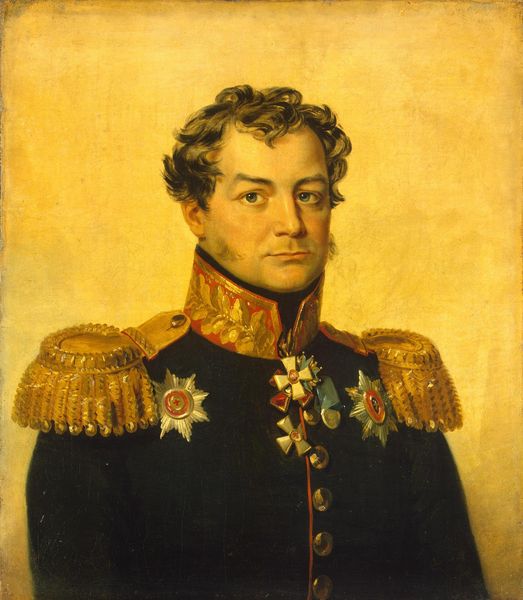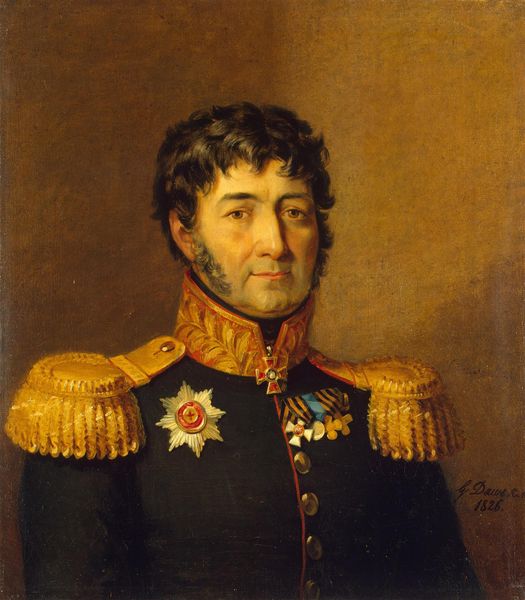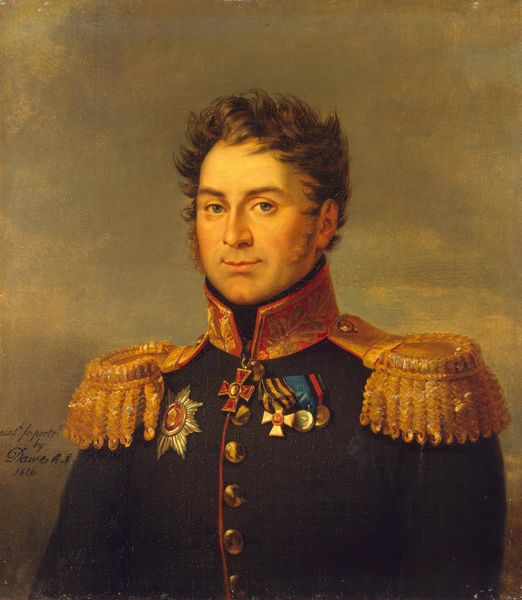
#
portrait reference
#
portrait head and shoulder
#
animal portrait
#
animal drawing portrait
#
portrait drawing
#
facial portrait
#
portrait art
#
fine art portrait
#
celebrity portrait
#
digital portrait
Copyright: Public domain
Curator: Standing here, we see "Ivan Vasilyevich Mantejfel, Russian General," a striking portrait currently residing in the Hermitage Museum. Though undated, it is by George Dawe, an English portrait artist. I’m immediately struck by the intense formality juxtaposed with what feels like a vulnerable gaze. Editor: Absolutely. There’s something very compelling about the way he’s presented, almost burdened by the ornate detail of his uniform. The weight of the gold embellishments on his shoulders… they almost feel like literal weights, symbolic of duty and the expectations placed upon him as a military figure. How does Dawe portray such complexities within the historical context? Curator: It's essential to remember that Dawe was commissioned to paint portraits of Russian generals who fought in the Napoleonic Wars. Understanding that specific historical backdrop sheds light on how heroism and power were constructed, visually. But here, the almost weary look in Mantejfel's eyes questions the uncritical celebration of militarism. He represents those in power, yet appears almost as though he has doubts or sees the human cost behind his position. Editor: Yes, and it seems to question conventional tropes about generals or military power. The medals— traditionally, straightforward signifiers of valor—seem different. A contemporary reading might suggest they become symbolic of the way states exploit symbols for ideological consolidation, a performative element tied to war. Is the artist attempting to grapple with this very problem? Curator: I think so, in the best way portraiture of the time allowed. Consider too the construction of masculinity in this period. Mantejfel presents a particular brand: stoic, composed, yet with a hint of vulnerability. He's not just a symbol of Russian power; he’s a man grappling with his own place within it. This painting captures a crucial moment of tension. It speaks not just of individual identity, but of how societal expectations weigh on even the most powerful figures. Editor: And, in this context, a discussion surrounding military strength. Considering our era now, the emblems on the uniform almost morph into a loaded, perhaps warning, representation. There's something of the eternal about it; war may appear glamorous or impressive on the outside, yet also carries immeasurable damage and potential grief. Curator: Reflecting on our discussion, the true depth in Dawe's "Ivan Vasilyevich Mantejfel" is its ability to embody contradiction. It is a historical artifact, of course, but one resonating profoundly even in today's social discourse surrounding power, image, and expectations. Editor: Absolutely. In looking at his portrait, it’s amazing to see such clear symbolic tension so well-maintained through color and structure. It reminds me to continually probe these questions—it seems relevant now, if anything.
Comments
No comments
Be the first to comment and join the conversation on the ultimate creative platform.

